At Process Valve and Instruments, we supply and distribute industrial valves, instruments, and related accessories from companies like Perma-Cal, Noshok, Ralston instruments, etc. across the United States. We provide numerous products and assemblies that are useful in almost any industry. In what follows are many of the products and services we offer.
Find Any Type of Process Valves or related Instruments Here
Valves, actuators, tubing, hoses, instrumentation, and tube or pipe fittings are utilized in almost any branch of industry. As a result, piping system equipment comes in very different types, sizes, and materials. We will help you choose what is most suited to your purpose and piping system application.
Here are what we offer:
Process Valves
Valves are devices that make pressure regulation, control, and directing the flow of gas or liquid possible. They can open, close, or partially obstruct the passageways in a system, and because of their versatile applications, they come in different types and materials (stainless steel, brass, carbon steel, Monel, Hastelloy, etc.).
Another matter that contributes to this variety of types is the nature of the media. Toxic or corrosive media are determinant factors for valve material compatibility. Also, the pressure and temperature of the media play an important role in choosing a suitable valve. Knowing about each type and their differences will help us in selecting the right valve(s) for your system.
Ball Valves
One of the most widely used valves is the ball valve. They are quick to act and can be easily actuated. They come in different materials and sizes, which makes them even more useful. A ball valve contains a hollow ball (hence the name) that is perforated. The ball can move with the valve handle which makes it possible to direct the flow in either direction or to stop it.
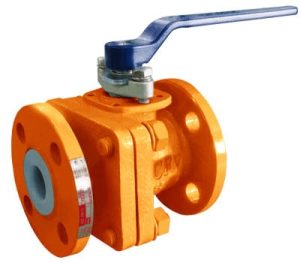
Butterfly Valves
A butterfly valve consists of a rotating disc that is used to stop or regulate the fluid. The rotating disc looks a bit like butterfly wings, that is why we call them butterfly valves. They are also quick-acting, simple, light, and easy to be installed in a pipe. Their size ranges from 2 inches to over 12 feet in diameter. They also work great in combination with electric and pneumatic actuators.
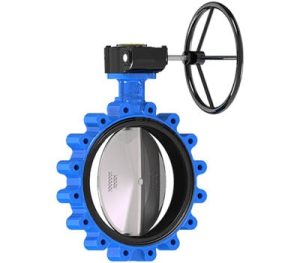
Needle Valves
Needle valves or plunger valves are one of the best when it comes to precise and smooth regulation of flow. You can also control the pressure of the flow with them. There is a needle-like plunger in the structure of this type of valve which is great for making a tight seal and controlling the fluid with precision.
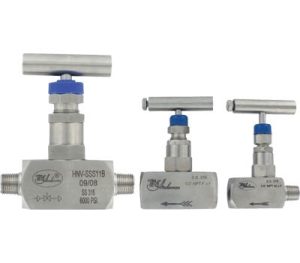
Plug Valves
Plug valves, which are a type of flow control valve, include a hollow cylindrical or conical passage that allows or prevents the flow. A manual quarter-turn causes the way to open for the fluid. As a result, the flow can be increased or decreased by the user with the help of a handle. But the friction caused by the plug’s rotation can wear it out, especially in higher temperatures.
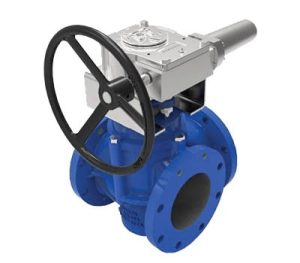
Diaphragm Valves
Diaphragm valves, also known as membrane valves, have a relatively simple design that can be both manual or actuated. The elastomeric diaphragm controls the flow rate by flexing up or down. They reduce leakage and make a tight shut-off. Another advantage is that they are the best option for fluids with particles. 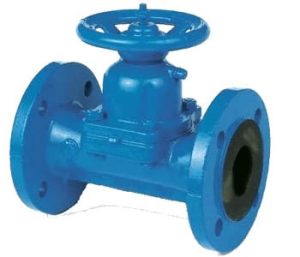
Globe Valves
As the overall shape of the valve is spherical, they are called globe valves. They are used to regulate and control the flow with a moveable disc or plug. The disc/plug is connected to a stem and when it comes down, it blocks the passage. Since they are multi-turn valves, they do not fully open or close quickly. They can be automated. Many globe valves are used as control valves.
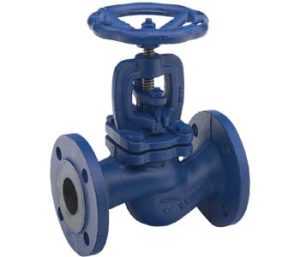
Check Valves
Check valves are used to allow the flow in only one direction and prevent backward flow. That is why they are also called non-return valves. A check valve consists of two separate openings; one for allowing the fluid to enter, and the other for allowing it to leave.
Based on their structure and application, they come in different types, including swing check valves, piston check valves, ball check valves, and tilting disc check valves.
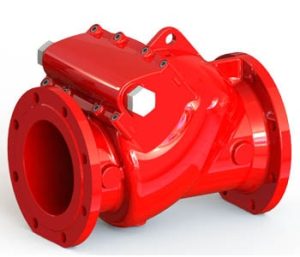
Gate Valves
Gate valves, also called sluice valves, look exactly like a gate, hence the name. Actually, to open or close the passageway, a handwheel moves the gate or wedge-like disk up and down. Most gate valves are multi-turn valves. Gate valves have narrow bodies and have specific applications in which they excel.
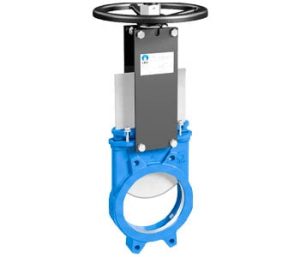
Pinch Valves
Pinch valves create a pinch in the passage with the help of air pressure to obstruct the flow. They are mostly used for corrosive and abrasive fluids and can finely separate the flow from the internal parts of the valve. However, there are some drawbacks. As pressure differential is used to move the elastomeric sleeves of the valve, they can get faulty relatively soon. Besides, they do not function well in high temperatures.
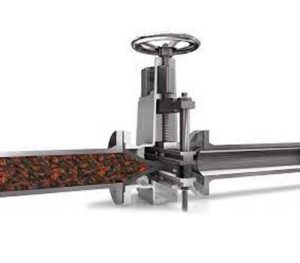
Sanitary Valves
For chemical, food, pharmaceutical, and other industries that need sterile piping system equipment, we offer sanitary valves. The body is smooth and does not have any cavities or other ideal places for bacterial growth. They are also easy to be cleaned and can operate both manually and automatically.
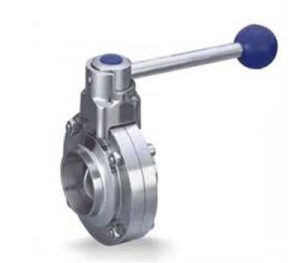
Specialty Valves
Specialty valves, as the name implies, are designed for special purposes to fit the size and other specific features of a given system. For example, the materials and operators are selected in a way that is best suited to the purpose and location of the piping system. They also come in different types, including check, plug, globe, and gate valves.
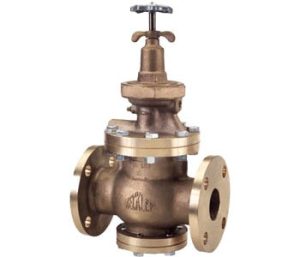
Safety Valves and Relief Valves
In some systems, there is a possibility that the pressure or temperature exceeds the limit and causes damage or explosion. Therefore, such systems need a safety valve, which is used as a fail-safe device, to prevent dangerous incidents. They operate automatically when things go beyond the preset limits.
One of the best examples is a pressure relief valve (PVR) that controls the level of pressure in a system and acts automatically to reduce it if it exceeds a certain limit. They are most useful in the petrochemical, chemical, and oil and gas industries.
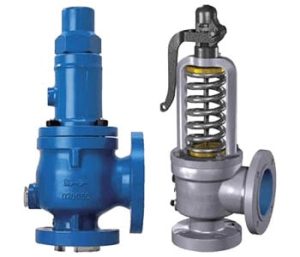
Sampling Valves
Sampling valves are designed to simplify the process of collecting a sample from the fluid without the risk of contamination. The sampling is done to test the fluid, control its quality, identify it, etc. This piece of process equipment is mostly used in the pharmaceuticals, chemical engineering, and food industry.
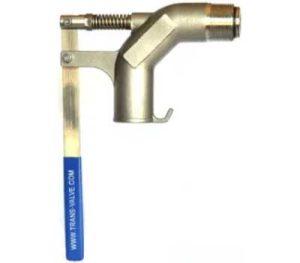
Other Valves
We also supply other valve types, which are widely used in process industries and piping systems, but there are too many to name here. We can use our experience to help you choose the valves to get the best results.
Request a Quote
Process Instruments
Another big category we offer is instrumentation or instruments. These are tools and devices, such as gauges, regulators, transmitters, sensors, and so forth, that make the automatic adjustment, regulation, measurement, and control of the media and system possible. We offer many kinds of process instrumentation here at Process Valve and Instruments. Some of the instruments we supply and help specify include: hand pumps, nitrogen source kits, manifolds, a Ralston Instruments laboratory grade pressure and temperature meter and calibration device, pressure gauges, vacuum gauges, differential gauges, test gauges, process gauges, analog gauges and digital gauges, thermometers, thermocouples & thermowells, industrial transducers & transmitters, regulators and pressure switches, level switches, temperature switches, position indicating switches, force sensors, etc… Read on to learn more about some of our instrumentation products.
Gauges
A pressure gauge is a method of measuring fluid, gas, water, or steam intensity to ensure there are no leaks or pressure changes that would affect the performance of the system. They are made in various sizes of various materials and designs.
- Process Gauge:
Process gauges have lower-resolution dials and pointers. They typically have an accuracy of ±0.5% Full Scale at Mid-Scale / ±1.0% Full Scale. - Test Gauge:
Test gauges have higher-resolution dials and pointers. They typically have an accuracy of ±0.5% Full Scale. They are mostly used to test or calibrate the system or in laboratories as a bench reference point. - Digital Gauge:
The most accurate type of gauge is a digital gauge. Both the measurement and display of pressure values are combined in one easy-to-read, compact device. They typically have an accuracy of +/- 0.1% of Full Scale.
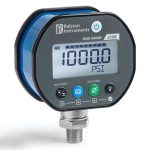
Thermometers and Thermowells
Thermometers are temperature sensors. They measure the temperature of the content. Thermowells protect thermometers and temperature probes from pressure, vibration, shock, and corrosion in tanks and pipelines. These thermowells isolate the contents of the process, so temperature sensors can be replaced without stopping flow or draining the system.
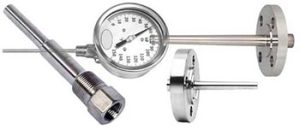
Industrial Transducers and Transmitters
When these terms originated there was a distinctive difference between the two. A transmitter was referred to as an instrument with a current signal (i.e. 4 mA to 20 mA) and a transducer was referred to as an instrument with a voltage signal (i.e. 0 Vdc to 10 Vdc). As time has progressed these terms are now commonly interchanged for reference to either output signal.
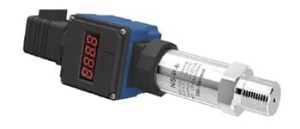
Regulators and Switches
A Pressure Regulator is a mechanical device designed to regulate system flow pressure in response to upstream or downstream pressure changes. A pressure regulator contains a pressure-reducing device, such as a poppet valve, a kind of sensor, like a diaphragm, and a force element, such as a spring. Instrumentation switches come in different types, for example, valve switches, flow switches, pressure switches, temperature switches, and position indicating switches, among others. As the name suggests, they are installed to indicate or control a condition in the process. A switch is a device for making, breaking, or changing the connections in an electrical circuit. Position switches are used whenever moving parts must be positioned, controlled, or monitored.
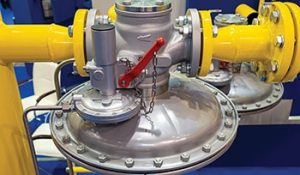
Instrumentation Calibration
To increase the accuracy and improve the design and functions of the equipment, the system must be tested. This is called instrumentation calibration. Different instruments are used to test various aspects of the system.
For example, calibration hand pumps are used to test the pressure measurement. These pumps usually work in combination with calibration fittings and nitrogen calibration sources and Instrument manifolds.
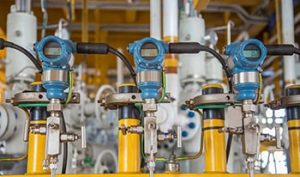
Making tough jobs easier.
Actuators
Actuators are used to operate valves, dampers, fluid couplings, and other devices used in industrial process control. The industrial actuator can use air, hydraulic fluid, or electricity for motive power. These are referred to as pneumatic, electro-hydraulic, or electric actuators.
We supply almost any kind of actuation, including manual, pneumatic, electric, and hydraulic. 1/4 Turn, Multi-Turn, Linear, Rotary Vane. All sizes and torque outputs. On / off / jog or modulating, fail-open actuator, fail-closed actuator, fail-safe actuator, spring return actuator. In materials made from steel, aluminum, or corrosion resistant: composite, stainless & special coatings.
A valve positioner is a device mounted on the actuator that exerts or reduces air pressure as necessary to make sure the valve achieves the correct position. Positioners can be pneumatic, electro-pneumatic or digital. Positioners make sure the valve is in the position commanded by the process controller.
We supply all types of positioners, including pneumatic, electro-pneumatic, or digital.
Manual Actuator
Manual valve actuators are not automated and need physical force to operate. You can turn a handwheel or a chain wheel, or use a lever, a handle, or a gear to change the state of the valve.
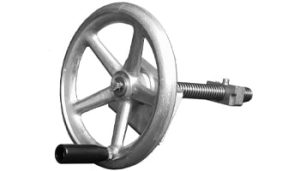
Pneumatic Actuator
Pneumatic actuators are the most common type used in process industries. They use the pressure from compressed air or gas and convert it to mechanical motion to control one or more valves.
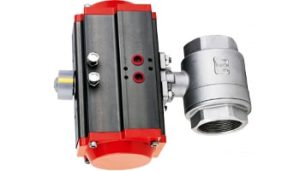
Electric Actuator
Electric actuators use electric power and convert it into movements. They are widely used in different devices and are available in a wide size range.
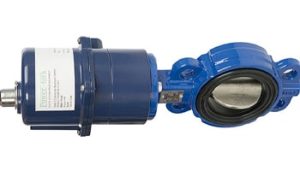
Hydraulic Actuator
A kind of cylinder or fluid motor provides hydraulic energy for hydraulic actuators. They convert it into a mechanical motion to control a valve.
When choosing an actuator, you should take into account some specifications of your system. For instance, how much force you need, what is the nature and size of the movement it must trigger, what is the desirable speed, etc. Generally speaking, selecting the right actuator must be done by an expert. You can also get already actuated valves to make things easier (see below).
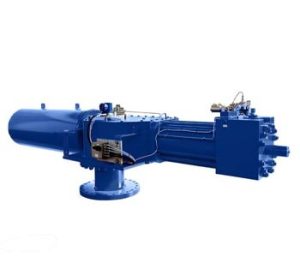
Fittings
Pipe, hose, or tube systems can be joined by various fittings. A fitting or adapter is used to join straight lengths of pipe, hose, or tube, adapt to different sizes or forms, and regulate (or measure) fluid flow. They can also manipulate the direction of how fluid or gas flows through the system. These separate parts and pieces join together to provide secure, leak-free connections between sections. These different pieces are joined by various fittings, like tube fittings, pipe fittings, unions, weld fittings, hose fittings, VCO fittings, couplings, JIC fittings, compression fittings, adaptors, ORFS fittings (also called O-ring face seal fittings), calibration fittings, compression fittings, CGA fittings, ISO fittings, MILSPEC fittings, instrumentation fittings, etc. The fittings can be made of various materials, such as Brass, Stainless Steel, Carbon Steel, Hastelloy, Monel, Inconel & other exotic metals as required. Fittings can be sized from 1/16” to 2 1/2”. Fittings can operate in pressure ranges from vacuum to 10,000 PSI.
Common Pipe and Tube Fittings Used in Systems
Some of the most common types of fittings are: Elbows, Reducers, Tees, Couplings, Unions, Caps, Crosses, Plugs, Swage nipples, Adapters, Bushings, and Flanges
- Elbow: When there is a need to change the direction of the flow in a system, an elbow fitting is used. They come in different angles and diameters.
- Tee: This fitting is T shaped because of its two outlets and one inlet. The three sides of the Tee can be equal or unequal in size.
- Reducer: Used when there is a need to reduce the size of the flow.
- Union: A threaded fitting that allows the pipework to be separated and reconnected without any horizontal movement in the pipe.
- Coupling: It is a short pipe or tube that joins two pieces.
- Cross: It is a four-way fitting, with one inlet and three outlets.
- Cap: Used at the end to close it. Caps push or thread over the outside of a part.
- Plug: Used at the end to close it. Plugs push or thread inside the part.
- Swage nipple: Generally used to connect butt-welded pipe to a socket-welded or screwed pipe.
- Bushing: A fitting used to join two pipes of different sizes. A bushing is threaded inside and out.
- Adapter: An extremely important fitting that extends or terminates pipe runs. They are used to connect dissimilar pipes.
- Flange: To make a seal inside the pipe system, two flanges are screwed to one another with a gasket placed between them.
- Butt welded fitting: A butt weld fitting is the welding of the fitting to the same sized diameter pipe joined end to end.
- Socket welded fitting: A socket weld fitting fits over the outside of the pipe it is being welded to.
- Face seal fitting: Face seal fittings have the O-ring located in the grooved area at the end of the male thread.
- Boss seal fitting: Boss seal fittings have the O-ring located at the base of the male thread.
- Compression fitting: One of the most common and versatile methods of connecting metal or hard plastic tubing. Made up of the same three basic elements: a compression nut or screw, one or more ferrules, and a compression-fitting body.
These are some of the most common fittings. They come in various sizes, shapes angles and materials. We can help you select the right fittings for your system.
Tubing and Hoses
The applications and functions of hoses and tubing cover a wide range. They are useful in different systems and structures to carry liquid, gas, slurry, etc. One advantage of hoses, that has made them popular in the process industry, is their flexibility, even the metal-based ones. This versatility accounts for the varied materials they are made of. You can find them in both non-metal-based materials, such as nylon, rubber, thermoplastic, PVC, silicone, fluoropolymer, TPR (thermoplastic rubber), latex, nylon, polypropylene, and polyethylene, among others, and metal-based materials such as stainless steel, copper, steel, brass, Hastelloy, aluminum, etc.
We supply most sizes, types, materials, and thicknesses of any type of flexible hose and custom hose assemblies and represent a wide range of fittings, couplings, & adaptors. Custom hose assemblies include flexible metal, rubber, PTFE, beverage – DEHP & BPA free, chemical transfer, Air/coolant / strip-wound hose, composite assemblies (hydraulic, pneumatic, jacketed) & expansion joints.
For tubing, we offer: import tubing, source & specification controlled domestic tubing in 304 stainless steel & 316 stainless steel dual rated, seamless tubing & welded tubing, and custom coil tube available in 20’ lengths. Tubing from 1/8” to 2” OD’s with a variety of wall thicknesses & pressure ratings, ASME & ASTM compliant.
Custom Valve Packages for Your Specific Purpose
We make custom-designed actuated valve packages to fit your system’s specifications. Our team of experts has been building custom valve assemblies for decades. They are quite competent and skilled. We will build, test, and stroke the assembly that best suits your specific needs.
How to Order From Process Valve and Instruments
Process Valve and Instruments provides and delivers industrial valves and related instruments from Birmingham, Alabama to the whole country. Our first-class products from Perma-Cal, Noshok, Ralston, SSP, and other prestigious manufacturers are delivered on time, and on budget. We take pride in being one of the best and most reputable manufacturer’s representatives in this industrial valve and instrumentation field. Call us to place an order or fill out the form below, we will get back in touch with you. You can also arrange an appointment to visit us at 811 5th Avenue, North in Birmingham, AL. Our normal hours of operation are Monday through Friday from 8 AM to 5 PM.
